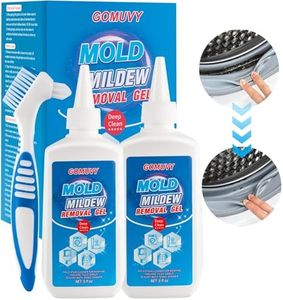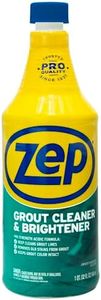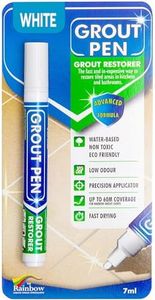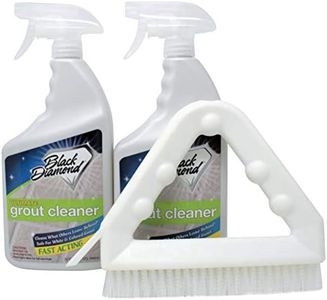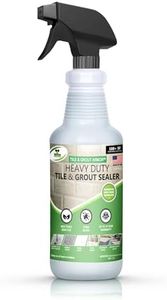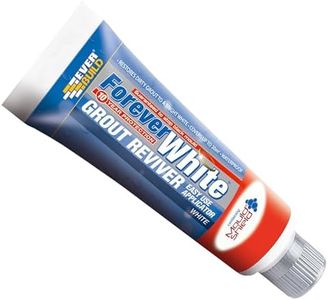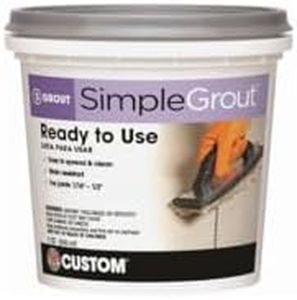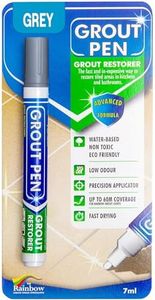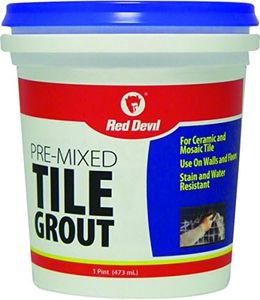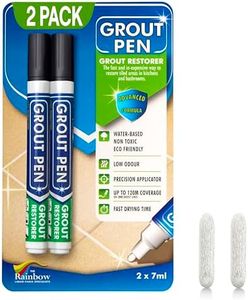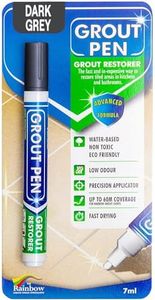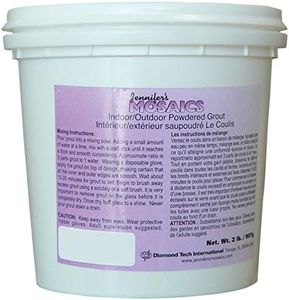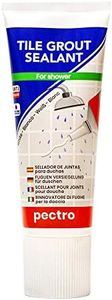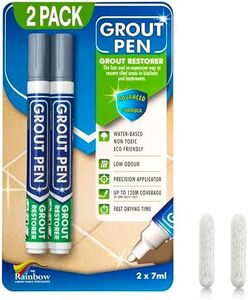We Use CookiesWe use cookies to enhance the security, performance,
functionality and for analytical and promotional activities. By continuing to browse this site you
are agreeing to our privacy policy
10 Best Grout Stains
From leading brands and best sellers available on the web.Buying Guide for the Best Grout Stains
Choosing the right grout stain can make a big difference in both the appearance and longevity of your tiled surfaces. The goal is to find a stain that not only matches your desired color but also adheres well, offers durability, and protects against future staining. When shopping for grout stains, you’ll want to pay close attention to several key specifications to ensure a good result for your specific project and needs.Type of StainThe type of grout stain refers to its composition—typically either water-based or epoxy-based. Water-based stains are easier to apply and clean up, making them popular for DIY projects, while epoxy-based stains are more durable and resistant to heavy wear. If you're working in a low-traffic area or prioritizing a simple application, a water-based stain may be best. For kitchens, bathrooms, or commercial spaces where spills or scrubbing are common, epoxy-based options provide extra longevity.
Color Range and OpacityColor range means the selection of colors available and opacity describes how completely the stain covers the original grout color underneath. Some stains are more translucent, subtly tinting the grout, while others are highly opaque and can create a drastically new look. If you want to brighten or slightly modify your current grout color, look for lighter, more transparent stains. For full color changes or to cover old, stubborn discoloration, choose a product that promises high opacity and a wide range of shades.
Coverage AreaCoverage area tells you how much surface the product will treat, usually given in square feet or meters per bottle or tube. Products vary significantly in how much area they cover, often depending on formulation and application thickness. If you’re working on a large tiled floor or multiple rooms, you’ll need a stain with generous coverage, while a small touch-up requires much less. Estimating your area beforehand can help you buy the right amount and avoid running short mid-project.
Durability and ResistanceDurability refers to how well the stain holds up over time, especially against foot traffic, spills, cleaning agents, and water. Some stains include advanced resistance to mildew, mold, or UV fading, important for wet areas like bathrooms or bright sunlit rooms. For areas that experience frequent moisture, heavy use, or require frequent cleaning, prioritize stains that specify high durability and resistance. Less-used spaces can get by with less stringent durability.
Drying and Curing TimeDrying and curing time is how long the stain needs to set before being exposed to water or foot traffic. Some stains dry within an hour, while others may need several hours or even a couple of days to fully cure and reach maximum durability. If you need quick turnaround, choose a stain labeled as quick-drying or fast-curing. For projects where time is flexible, longer curing stains might offer other benefits, like deeper penetration or longer-lasting results.
Ease of ApplicationEase of application refers to how simple and mess-free the stain is to use. Some products come in pens or with applicator tips for precision work, while others require brushes or sponges. More user-friendly products are great for beginners or small repairs, whereas more involved methods might be worthwhile for larger jobs or if you're comfortable with DIY tasks. Your own experience level and the project size can help you pick a stain with the right application style for you.
